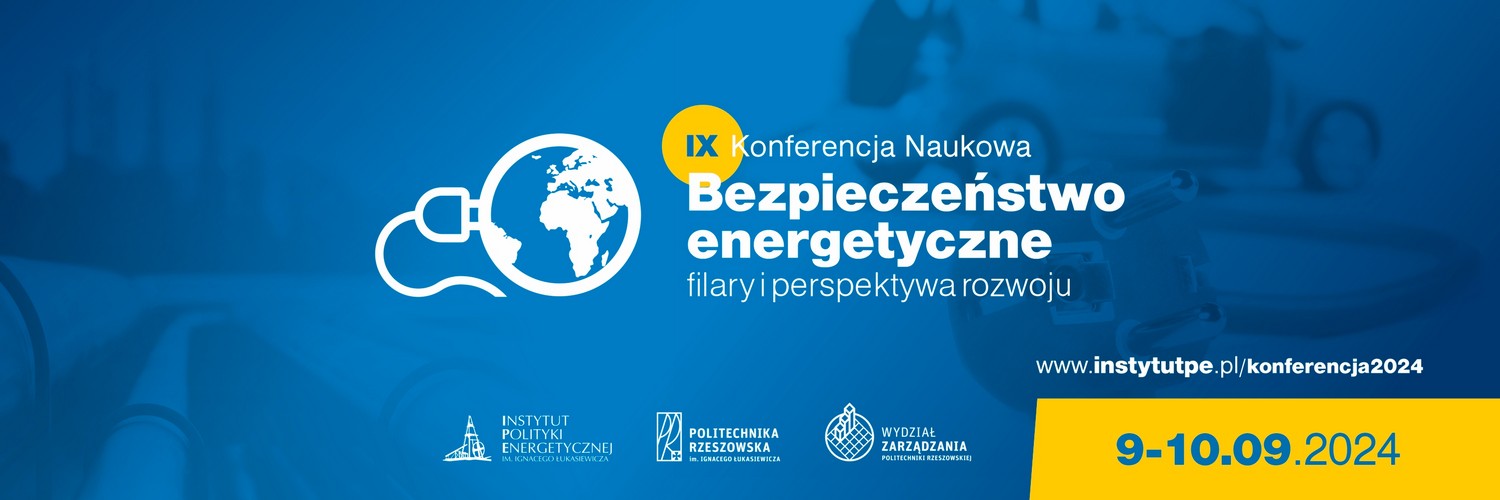Information for Authors and Editorial Requirements
Information for authors submitting a text for publication.
Submitting a work for publication
In order to submit a work for publication, a questionnaire should be filled (available for download here) and sent to the Ignacy Lukasiewicz Energy Policy Institute to the following address: wydawnictwo@instytutpe.pl
Licence information
The Ignacy Lukasiewicz Energy Policy Institute is the copyright holder of the published texts.
Based on an individual agreement with the Author, Ignacy Lukasiewicz Energy Policy Institute publishes under open or restricted access according to the following types of licenses.
Attribution 4.0 International (CC BY 4.0)
This license permits copying, modifying, distributing, representing and performing the work only under the condition of the attribution. It is a license that guarantees the broadest freedom for the licensee.
Learn more about this license: https://creativecommons.org/licenses/by/4.0/deed.en
Attribution-NonCommercial-NoDerivatives 4.0 International (CC BY-NC-ND 4.0)
This license allows you to distribute, display and perform the work only for non-commercial purposes and on the condition that you keep it in its original form (do not create derivative works).
Learn more about this license: https://creativecommons.org/licenses/by-nc-nd/4.0/deed.en
Cost of publication
The costs of publication include all activities from the moment the Author submits the typescript to the Editorial Office that are necessary for the publication of the book and promotional activities. This includes costs of:
- graphic design of illustrations and figures,
- linguistic correction, typesetting and page layout,
- fees for reviewers,
- cover design,
- print,
- promotional activities before and after the publication of the book,
- Editorial staff and indirect costs.
The valuation is individual for each submitted study and also depends on your own contribution.
The basis for the Editorial Office’s publication cost estimates is a questionnaire (available for download here).
Author’s responsibilities
The author’s responsibilities include:
- Ensuring the reliability and originality of the research results presented in the publication.
- Enabling identification of the sources quoted in the study.
- Providing access to the data presented in the work even after publication of the text.
- In the case of multi-author publications, disclosure of the contribution of individual authors to their creation and prevention of cases of scientific unreliability.
- Obtaining the rights to include all third party rights in the publication, including illustrations, tables, graphs, quotations, etc.
- Attachment of a bibliography to the work, including the publications that he has used in the text.
- Immediate correction of all factual errors in the text, indicated by the editor at each stage of the publishing process or discovered by the author after the publication of the work.
Editorial requirements
- The minimum length of the Work should not be less than 6 publication sheets (including the title, abstract, key words, proper text, illustrative material – including tables and graphs, footnotes and bibliography).
- The work should be written in Times New Roman font (12 points); line: 1.5 with line spacing of 0 point; margins: 2.5 cm, no bold.
- The text should be prepared in Polish/English and contain the following elements:
- author’s name and affiliation;
- title;
- an abstract in Polish and English;
- keywords;
- introduction;
- the body (including subtitles);
- summary/conclusion;
- bibliography.
- The author’s name should be written in italics directly under the title.
- The summary should not exceed 1 200 characters with spaces. They should be placed directly under the name of the author before the relevant part of the text.
- The number of key words (or phrases) should be between 4 and 8 words.
To the typescript should be attached in separate files:
- Information for the Editor including a presentation of the theme of the work, the layout of the content, the strengths of the book that distinguish it from others (novelty, topicality, etc.). The volume of the text must not exceed one A4 standard typed page.
- Author/authors’ biography with affiliation, including title or degree, place of employment and ORCID number. One biogram should not exceed 500 characters with spaces.
- Abstracts in Polish and English. The summary should not exceed 1 200 characters with spaces. They should be placed directly under the name of the author before the relevant part of the text.
- A book note of up to 1 000 characters with spaces in the publication language for use on the cover. It may be the author’s text or a selected fragment of a review, provided that the reviewer’s consent to its publication and possible correction is obtained.
Citation method
Quotations, i.e. excerpts from other documents, source texts or scientific studies, must be written in quotation marks. Immediately after the quotation, the name of the author should appear in parentheses. Each quote must have an appropriate footnote. If the text of a quotation mentions the titles of studies or documents, they should be written in italics.
Formulas used in the article should be placed in the middle of the page, on separate lines (with a spacing of 6 points from other lines). and identified by a single design number and title. If symbols are used in the design, a legend should be placed under the design to explain them. If the source of the model is another study or document, the source of the model shall be stated underneath.
Insertion of illustrative material in the text
All illustrative material, tables, figures, charts, etc. should be placed in the middle of the page, in separate lines (with a 6 point spacing between the other lines). and marked with a single material number and title. Underneath the material, indicate its source (font 10 pt. Times New Roman, italics, interline 1. 5). If possible, the materials should be prepared in black and grey shades.
Footnotes
In the article, bibliographic notes should be placed in round brackets immediately after the excerpt from the text to which the footnote refers (Harvard footnotes).
Examples of footnotes:
- monograph: name of author(s), year of publication, page – (Smith, Jones 2016: 12);
- journal article: author(s) name(s), year of publication, page – (Jones 2013: 33);
- article in collective work: name of author(s), year of publication, page – (Smith 2016: 14);
- article from website – (Smith 2009: 4)
Bibliography
A bibliography covering all the sources of the paper should be placed at the end of the article (font 10 pt. Times New Roman, line 0 point).



